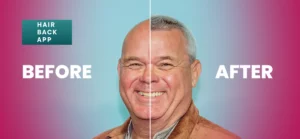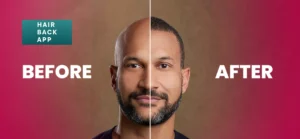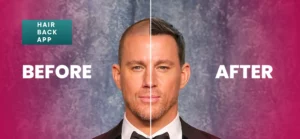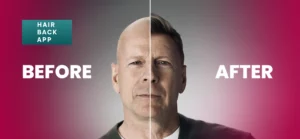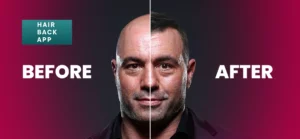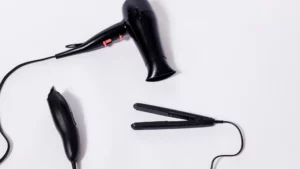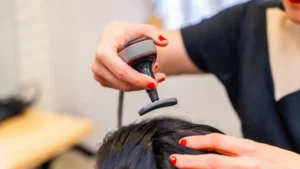Suppose you are considering a hair transplant as an option for treating any type of hair loss, including one-sided hair loss, traction alopecia, or hereditary hair loss conditions. In that case, the sapphire micro FUE hair transplant is an advanced and minimally invasive procedure worth considering.
My name is Emma Wright and I am a hair restoration content specialist with experience researching and creating content about various hair loss treatments and hair transplant procedures. Today, I’ll be explaining the Sapphire Micro FUE hair transplant technique.
Sapphire Micro FUE hair transplant is a versatile and advanced technique for treating various hair loss conditions. It offers patients the opportunity to restore their hairline and achieve natural-looking results with minimal discomfort and downtime.
But what is sapphire micro FUE hair transplant? Let’s find out!
What Is Sapphire Micro FUE Hair Transplant?
Sapphire Micro FUE is an advanced technique used in hair transplantation. In this procedure, individual hair follicles are extracted from the donor area (typically the back or sides of the scalp, where hair is more resistant to balding) using specialized instruments with sapphire blades.
These blades are thinner and sharper compared to traditional steel blades, allowing for more precise and smaller incisions, which results in less trauma to the scalp and faster healing.
The extracted follicles are then implanted into the recipient area (where hair loss has occurred) meticulously and artistically to achieve a natural-looking hairline and overall result. Additionally, the use of sapphire blades can result in less scarring, minimal bleeding, and potentially higher graft survival rates compared to other extraction methods.
Here’s a detailed breakdown:
- Follicular Unit Extraction (FUE): FUE is a method of hair transplantation where individual hair follicles are extracted directly from the donor area (typically the back or sides of the scalp) using a small punch tool. This technique differs from traditional methods like Follicular Unit Transplantation (FUT), where a strip of skin containing hair follicles is removed from the donor area.
- Sapphire Blades: In Sapphire Micro FUE, specialized tools with sapphire blades are used for the extraction process. These blades are extremely precise and sharp, allowing for the creation of smaller incisions compared to traditional steel blades. The smaller incisions result in less trauma to the scalp, reduced bleeding, and faster healing.
- Microscopic Precision: The use of sapphire blades enables the surgeon to make tiny, precise incisions, which is crucial for achieving natural-looking results in hair transplantation. The small size of the incisions also minimizes scarring and ensures a more comfortable recovery for the patient.
- Implantation: After the follicles are extracted, they are carefully implanted into the recipient area (the balding or thinning areas of the scalp) using specialized tools. The surgeon meticulously places the follicles at the correct angle and density to recreate a natural-looking hairline and overall hair pattern.
Is Sapphire Hair Transplant Better?
Whether Sapphire micro FUE Hair Transplant is “better” than other hair transplant techniques depends on various factors, including individual preferences, the expertise of the surgeon, and the specific needs of the patient.
However, there are several potential advantages associated with Sapphire Hair Transplant:
- Precision: Sapphire blades used in the procedure are exceptionally sharp and precise, allowing for smaller incisions compared to traditional steel blades. This precision may result in less trauma to the scalp, reduced bleeding, and faster healing.
- Natural-Looking Results: The smaller incisions made with sapphire blades enable the surgeon to implant hair follicles at a more precise angle and density, leading to a more natural appearance of the transplanted hair.
- Minimal Scarring: Due to the microscopic size of the incisions, scarring may be minimal with Sapphire Hair Transplant compared to other techniques, such as Follicular Unit Transplantation (FUT), which involves removing a strip of scalp tissue.
- Comfort During Recovery: Patients undergoing Sapphire Hair Transplant may experience less discomfort during the recovery period due to the smaller incisions and reduced trauma to the scalp.
- Versatility: Sapphire Hair Transplant can be used to treat various types of hair loss conditions, including male pattern baldness, female pattern hair loss, and hair loss due to trauma or medical conditions.

Does Sapphire Micro FUE Hair Transplant Leave Scars?
Sapphire Hair Transplant, specifically the Sapphire FUE technique, is known for its ability to minimize scarring compared to traditional hair transplant methods. However, it’s essential to understand that while the scarring is minimal, it’s not absent.
Here’s why scarring is minimized with Sapphire Hair Transplant:
- Smaller Incisions: The use of sapphire blades allows for smaller and more precise incisions during both the extraction and implantation phases of the procedure. Smaller incisions mean less tissue disruption, which can lead to reduced scarring.
- Faster Healing: With smaller incisions and less trauma to the scalp, the healing process tends to be faster. As a result, any scarring that does occur may be less noticeable over time.
- Natural Healing Process: The body’s natural healing process plays a role in minimizing scarring. Over time, the scars from the tiny incisions tend to fade and become less visible, especially when proper post-operative care is followed.
While Sapphire Hair Transplant can significantly reduce scarring, it’s essential to note that individual healing responses may vary. Some factors, such as skin type, genetics, and the skill of the surgeon, can also influence scarring outcomes.
What Is The Success Rate Of Sapphire Hair Transplant?
The success rate of Sapphire Hair Transplant, specifically Sapphire micro FUE can vary depending on several factors, including the skill and experience of the surgeon, the quality of the donor hair, and the patient’s overall health.
However, in general, Sapphire micro FUE is considered to have a high success rate when performed by a qualified and experienced surgeon.
Here are some estimated success rates based on various sources:
- Graft Survival Rate: The graft survival rate, which refers to the percentage of transplanted hair follicles that successfully take root and continue to grow, is typically around 90-95% for Sapphire FUE procedures. This high survival rate is attributed to the precision of the technique and the reduced trauma to the follicles during extraction and implantation.
- Patient Satisfaction: Patient satisfaction rates with Sapphire Hair Transplantation are generally high. In surveys and studies, the majority of patients report being satisfied with the results of their procedure, often citing improved self-confidence and overall appearance.
- Minimal Complications: Sapphire micro FUE is associated with fewer complications compared to traditional hair transplant methods like Follicular Unit Transplantation (FUT). The incidence of issues such as scarring, infection, and post-operative discomfort is relatively low with Sapphire micro FUE, contributing to its overall success rate.
- Long-Term Results: While individual results may vary, the majority of patients who undergo Sapphire Hair Transplantation experience long-term hair restoration. The transplanted hair typically continues to grow and blend seamlessly with the surrounding hair, providing lasting results.
What Do You Think?
With a graft survival rate of around 90-95% and high patient satisfaction rates, Sapphire micro FUE Hair Transplantation offers long-term, natural-looking results for individuals seeking to improve their hair density and appearance. However, individual results may vary, and it’s essential to consult with a qualified and experienced hair transplant surgeon to determine candidacy and discuss personalized treatment options.
If you are considering this hair transplant treatment method and are not sure where to start, you can read our hair transplant clinic review. We research the best hair transplant clinics in Turkey and give our unbiased reviews about their hair transplant cost, treatment methods, and hair transplant clinics.
You can also reach out to us for help and we’ll get you started on your hair transplant journey.


